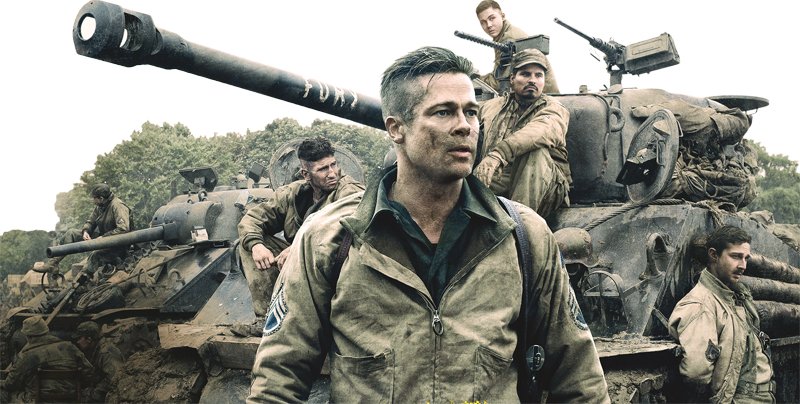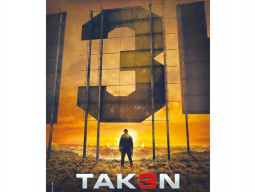
World War II is one of the most disturbing chapters in human history and has been a source of endless fascination for both film-makers and viewers alike. Its dark complexities gives storytellers a chance to examine brutality, morality, camaraderie and shed light on just how devastatingly terrible war is. David Ayer’s latest fictional film Fury sets out to do all of these things by exploring the story of a tank crew during the final days of the conflict.
It’s April 1945. The Allies are encountering ‘fanatical resistance’ in the heart of Nazi Germany and the American tanks are being outgunned by the far superior German military vehicles. Amidst the warfare, the M4 Sherman tank Fury has considerably seen more success and longevity than most of its counterparts, thanks largely to its commander, US Army staff sergeant Don “Wardaddy” Collier (Brad Pitt). He has led his crew — Boyd “Bible” Swan (Shia LaBeouf), Grady “Coon-Ass” Travis (Jon Bernthal), and Trini “Gordo” Garcia (Michael Peña) — through gruesome battles and they have emerged weary and hardened, with their morals unavoidably tangled if not entirely shattered.
The replacement for one of their fallen comrades, however, is quite the opposite. Inexperienced army typist Norman Ellison (Logan Lerman) is abruptly transferred to the crew, only to be left flabbergasted when he is faced with the amoral realities of war. “Ideals are peaceful, history is violent,” he is told, summing up the premise of the movie.
The ugliness of war is on full display throughout Fury’s over two-hour running time. There is no room for subtlety in the pressure cooker that Ayer has created and every idea is delivered in literal strokes. Gratuitous gore and disturbing imagery riddle the film and the intensity never lets up. The dynamic of its central ensemble may not be as complex as the film wants us to think, but the bonds between these broken men are nevertheless affecting. The actors embody their roles remarkably and make their often stereotypical characters seem convincing despite the fact that most of these portrayals are underwritten and haven’t been fully developed.
As it goes along, Fury takes some turns that seem driven by cinematic considerations at the expense of realism and its final act will probably not impress viewers who worry about accuracies and plausibility. But despite its heavy handedness and overly dramatic tone, the movie doesn’t fail to make an impact and bluntly delivers the harshness of its subject matter. Although, like many other war movies before it, this one too lacks the perspective from the other side that remains largely anonymous.
Ultimately, Fury’s dramatic impact outweighs its efforts at realism, and even when its twists aren’t entirely convincing, its cast still does an impressive job in bringing this tale of death and destruction to life.


Published in The Express Tribune, Sunday Magazine, February 8th, 2015.




























































COMMENTS
Comments are moderated and generally will be posted if they are on-topic and not abusive.
For more information, please see our Comments FAQ